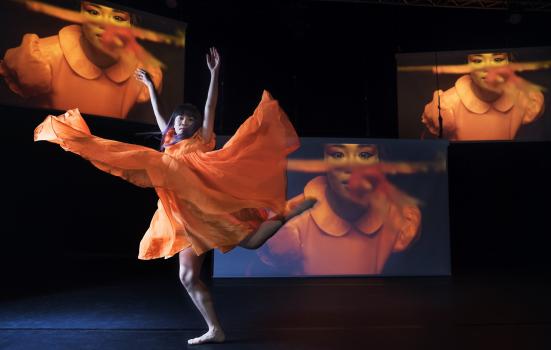In the lead-up to the opening of new venues in Hong Kong’s West Kowloon Cultural District, Anna CY Chan is embracing technology to broaden dance audiences and develop future talent.

Hong Kong is already recognised as a cultural centre with a number of significant institutions, grassroots initiatives, a thriving gallery scene and an international art fair. Soon it will welcome a number of new cultural venues as part of the West Kowloon Cultural District (WKCD).
The Xiqu Centre will open next year as the new home for Chinese traditional theatre. Then M+, the new museum for visual culture, will open in 2019 and focus on 20th and 21st century art, design and architecture and moving image. Freespace, a black box theatre where the public will be able to explore innovative programming across all genres, will also open in 2019
The growing prevalence of technology in many professions and industries has meant there is an expanding resource of talent and interest
Although our performing arts venues are still under construction, we have been actively programming on-site and off-site for several years now, targeting the general public in Hong Kong as well as performing arts professionals from around the world.
As Head of Dance, I am responsible for shaping the District’s artistic direction for this artform. In the lead-up to the opening of the new venues, my key considerations are to develop programming that will broaden audience awareness and interest, and support the future of dance talent here. In order to cement our position as a leading performing arts hub in the region, it is crucial for us to develop collaborations that will strengthen the ideals and importance of performing arts at home and beyond.
Advances in technology
Our programming reflects current trends in Hong Kong and globally. Many organisations and platforms here have put a special focus on dance video in the last decade, which is something that we will build upon. This led me to question how we could grow and sustain interest in dance once our venues are open.
One answer: technology. Advances in technology mean that our daily lives revolve more and more around computers, smartphones and multiple screens, so this approach connects strongly with the public as well as pushing the boundaries and creating new possibilities for dance in the future.
A large element of our forthcoming programme will take shape at outdoor venues and public spaces around West Kowloon. We chose to focus on dance through video and film, and juxtapose that with the existing tradition of screendance, the practice of capturing dance as a moving image mediated by a camera. Unlike a stage performance, a work of screendance does not end when the curtain falls – it can be screened and continue anywhere and at any time. This allows the qualities of Hong Kong dance to move beyond the existing limits and reach out to the world.
Capturing movement
Back in 2015, when we co-presented the first New Works Forum: Screendance with City Contemporary Dance Company, we pushed for dance video to go beyond simple cinema-style presentation. Through this collaboration we explored how to design a ‘moving image’ and build a new framework. I saw then how one of the participants, Australian choreographer and screendance director Sue Healey, embraced this innovative approach in handling dance and expression.
As a dancer, Healey is aware of how best to use and capture the movement and shapes that bodies create during the act of dance. Through her presentation of video, choreography and live performances, the scene was highlighted with aspects of lighting, sound and motion, which fused seamlessly to create a multi-strata experience.
I wanted to bring that to Hong Kong and share it with the dance community here, curious to see how our audiences would react to experiencing the performance from the dancers’ view. The resulting project, ON VIEW: HONG KONG, is presented through multiple formats, including online videos, installation and live performances. From the positive results we have witnessed, we aim to share future editions in Taiwan, Singapore and Japan.
Emerging talent
The growing prevalence of technology in many professions and industries has meant there is an expanding resource of talent and interest in universities. We found that the students and graduates from the School of Film and Television at the Hong Kong Academy of Performing Arts were eager and enthusiastic to take part. They supported various aspects of the project, assisting with backstage and supporting the production team as camera operators, focus pullers, boom operators and technical staff. Their contribution enhances the audience experience as well as continues to nurture talent for the future.
These projects let us help emerging talents develop skills in a fast-growing field on the boundary of art and technology. International collaborations are an integral part of our audience development strategy. By inviting regional and international partners to work alongside us, as we did with Sue Healey, we continue to build our network, share events and reach out to a wider international audience.
Anna CY Chan is Head of Dance, Performing Arts at West Kowloon Cultural District in Hong Kong.
www.westkowloon.hk/en




